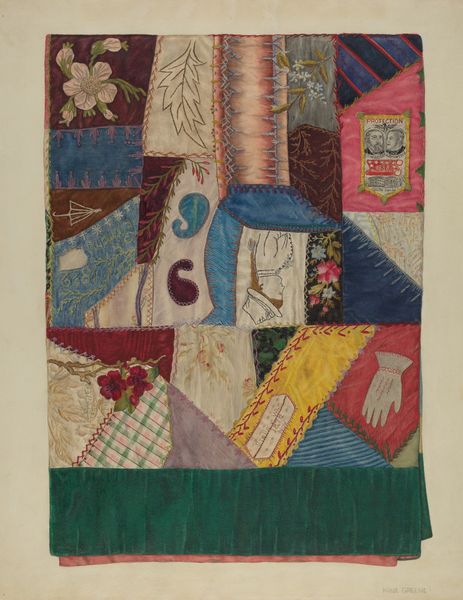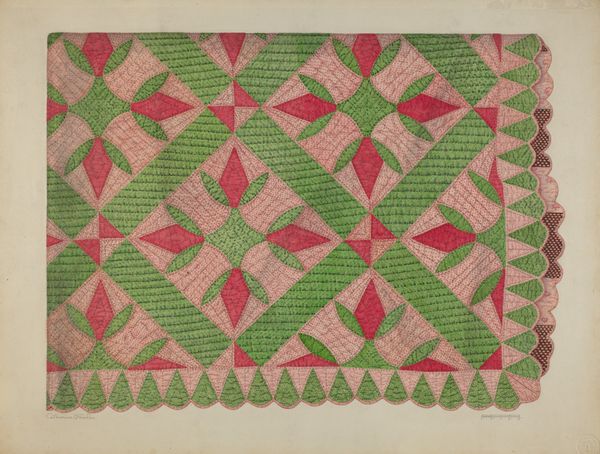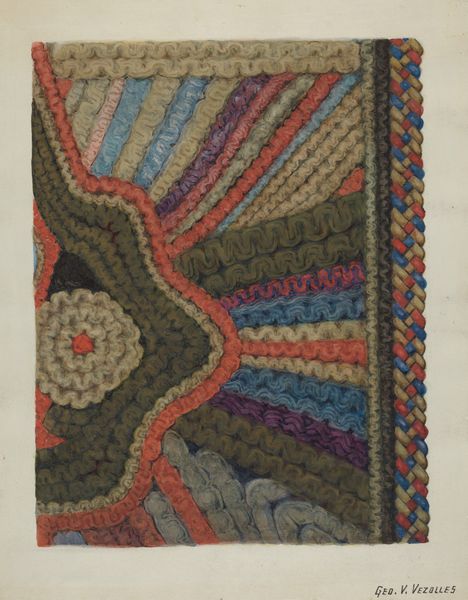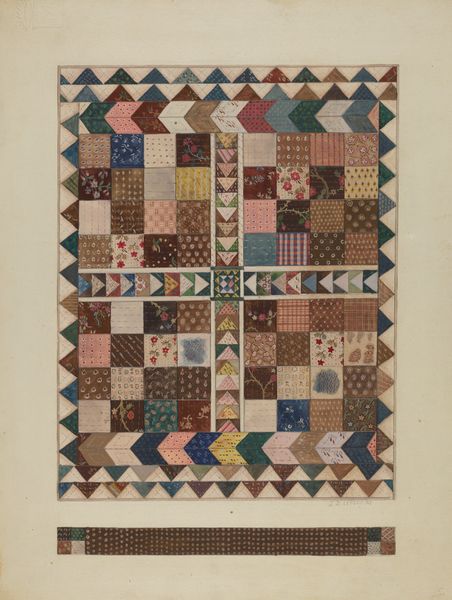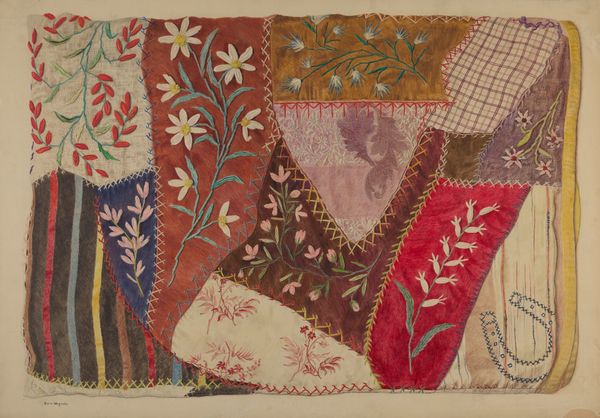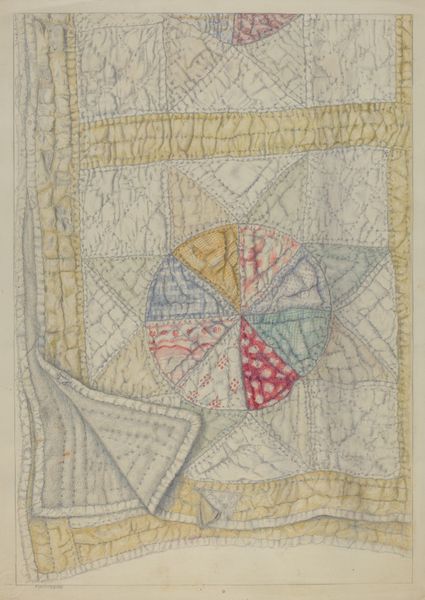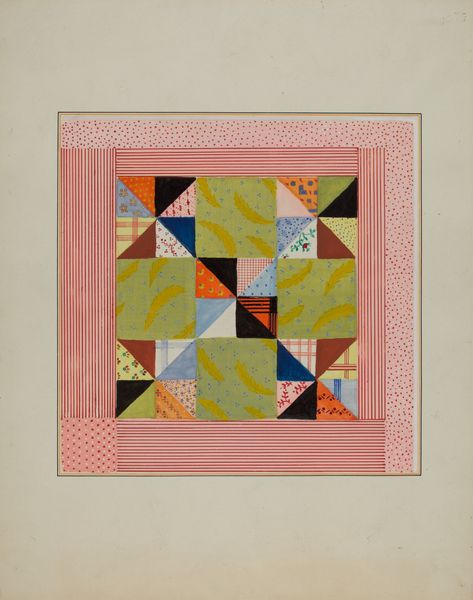
textile
#
folk-art
#
textile
#
folk-art
Dimensions: overall: 34.7 x 26 cm (13 11/16 x 10 1/4 in.) Original IAD Object: 48" wide; 72" long
Copyright: National Gallery of Art: CC0 1.0
Curator: Lena Nastasi created this piece, titled "Crazy Quilt," around 1936. It’s a drawing executed in mixed media. Editor: Oh, it makes me feel like I'm looking through a kaleidoscope of memories! Each little square is like a snippet from a forgotten dream, all stitched together in this wonderful haphazard way. Curator: Haphazard might not be the word I'd choose. Consider the systematic arrangement of the squares, each one a carefully contained burst of color and texture. It echoes, perhaps unconsciously, certain modernist grids of the era. Editor: Perhaps, but the thing that grabs me is its raw folk-art feel, that kind of charming irregularity you just can’t fake. I love how she layers patterns within patterns. Like, look at this section here, how many fabrics do you think went into this? What's she trying to capture in here with textiles? I imagine the time someone might spent in creating those blocks. Curator: Undoubtedly, textile arts invite reflection on temporality, but Nastasi seems primarily concerned with form. Notice the use of a consistent color palette; this strategy minimizes discord and draws attention to the deliberate compositional logic. Editor: It seems like she is inviting to consider all of the possible forms she can render in her composition while remaining tied to this common, quilt form. Each square seems a little off, warped, like there is almost a touch of abstraction as opposed to realistic geometry. Even something about the way this looks on paper rather than as a true quilt has such an irony, doesn't it? Curator: That’s a sharp observation. Indeed, the subversion of textile craft onto paper is quite powerful, prompting inquiries into materiality itself. What do you imagine she wants to capture or portray by doing it this way, rather than on fabric, for instance? I mean it still does the trick in representing it for the observer, yet removes any comfort. Editor: I suppose she transforms an object traditionally linked to warmth and utility into an emblem of artistic inquiry and expression. It really makes me think differently about textiles. Curator: Indeed, its layered meaning resides, paradoxically, in its deconstruction of meaning and materials, offering instead a study of forms and ideas of craft and design itself. Editor: Exactly! Thank you for quilting together a fascinating exploration for me!
Comments
No comments
Be the first to comment and join the conversation on the ultimate creative platform.
